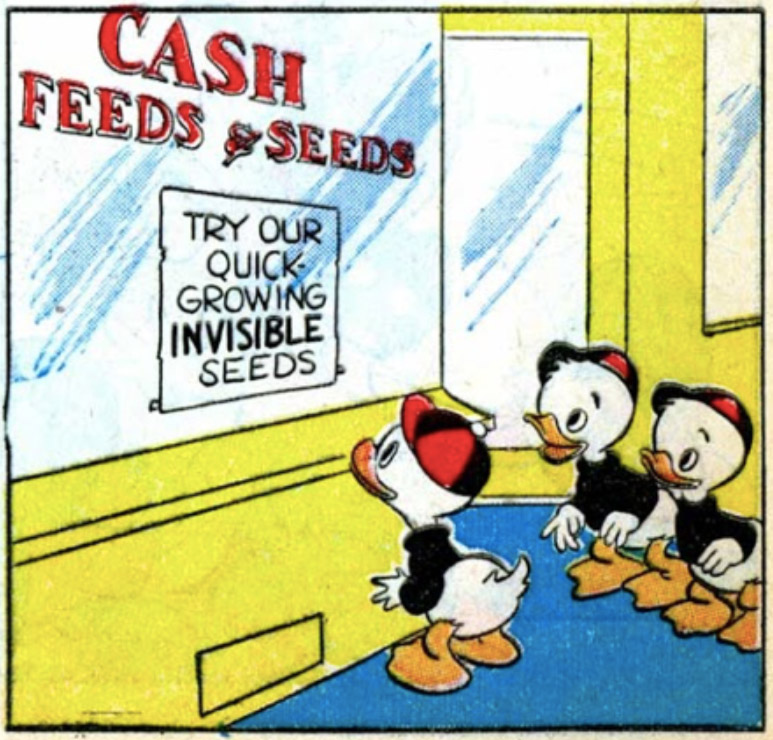In the world of retail marketing, some products pose a packaging problem.
Consider, for example, those products that are so small in proportion to their value that a reasonably-priced package may end up being more package than product. Think of a tiny bundle of saffron, or a skinny vanilla bean, swimming in the airspace of a standard spice jar. Or a coin-cell battery, the size of a button, blister-packed on a card the size of a paperback.
While seemingly absurd, this practice is not hard to understand. From a design perspective, every retail product needs to have a sufficient presence on the shelf to be seen by a customer. A tiny package would also be susceptible to falling through a crack somewhere or finding its way into a shoplifter’s pocket. In the case of the spice jar and the blister pack, both are transparent, so at least you can see up front exactly how little product you’re getting.
But some products are so vanishingly small, imperceptibly light, and inconspicuously packaged that they present a peculiar possibility: that a small hiccup in the manufacturing chain could lead to a case of all package and no product — leaving no evidence but your rightful indignation.
Seeds of discontent
Earlier this year, I found myself in the garden aisle of a hardware store, perusing packets of vegetable seeds. As I handled the colorful packets, tiny portions of tiny seeds rattled around unseen within. It occurred to me that seeds must be notoriously difficult to package. Some packets indicated that they contained as little as 1/100 of a gram of seeds — a miniscule amount that seems almost impossible to measure at the speed of an industrial packaging line, and certainly impossible to detect by hefting the package. One can only rely on the rattle to know that the packet contains anything at all.
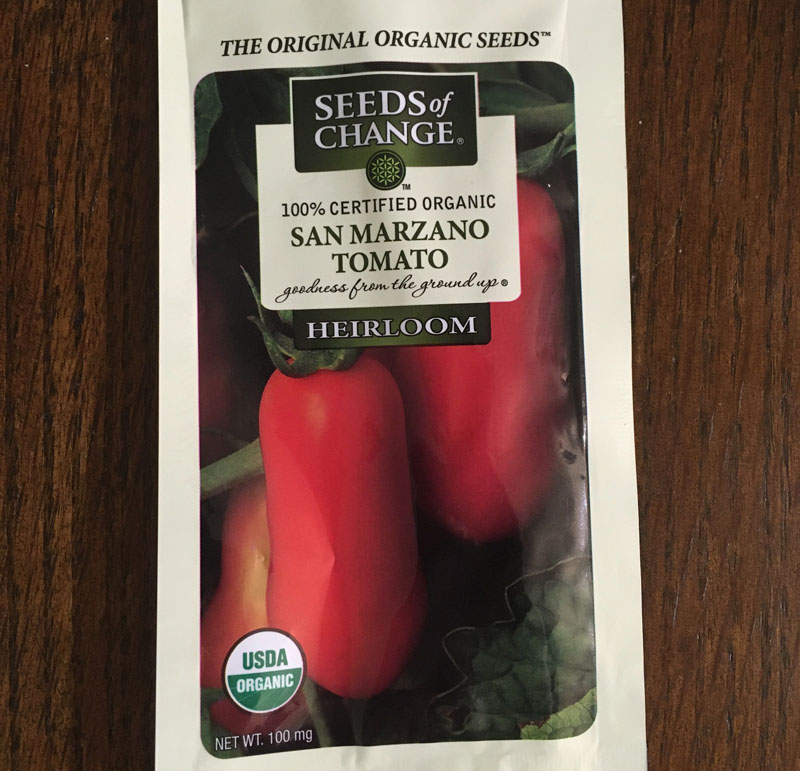
I picked up a glossy package of San Marzano tomato seeds. My first impulse was to wonder whether it was apathy or irony that was being demonstrated by the manufacturer’s choice of Mylar as a packaging material, for seeds that were organically grown. On what basis was a simple paper packet deemed inadequate? In a landfill, this packet will go on to outlast a thousand generations of the seeds it contains, until it disintegrates into microplastics, and finally leaches out to poison the soil and sea. But that’s a topic for another day.
Normally I never buy tomato seeds because I save my own. But I had never grown San Marzanos, and I wanted to try them, and this was the only brand available. So I picked up the first thin packet in the display.
As I handled it, there was no rattle. Perhaps it was the unfamiliar plasticky feel of Mylar, I thought, and a slight vacuum pack, that prevented me from getting a sense of how many seeds might lie within. The other packets felt the same.
Now, San Marzano tomatoes are said to be excellent for sauces and tomato paste, and this is attributed to having far fewer seeds than other varieties. Thus, it is logical that a packet of San Marzano seeds might not contain as generous a surplus as a packet of a seedier variety.
So I placed my trust in the supply chain, placed a package in my basket, and soon the thought had evaporated from my mind.
Once at home, I opened the package, in order to know how few there really were. In keeping with its nature, the Mylar packet was not cooperative, and would not tear open by hand. So I found a pair of scissors and carefully cut it at the top, after having shaken the package to ensure that the seeds were not in the path of the blades.
But my fear of scissored seeds was misplaced. Peering into the silvery interior, I could see no seeds at all. Not a single one.
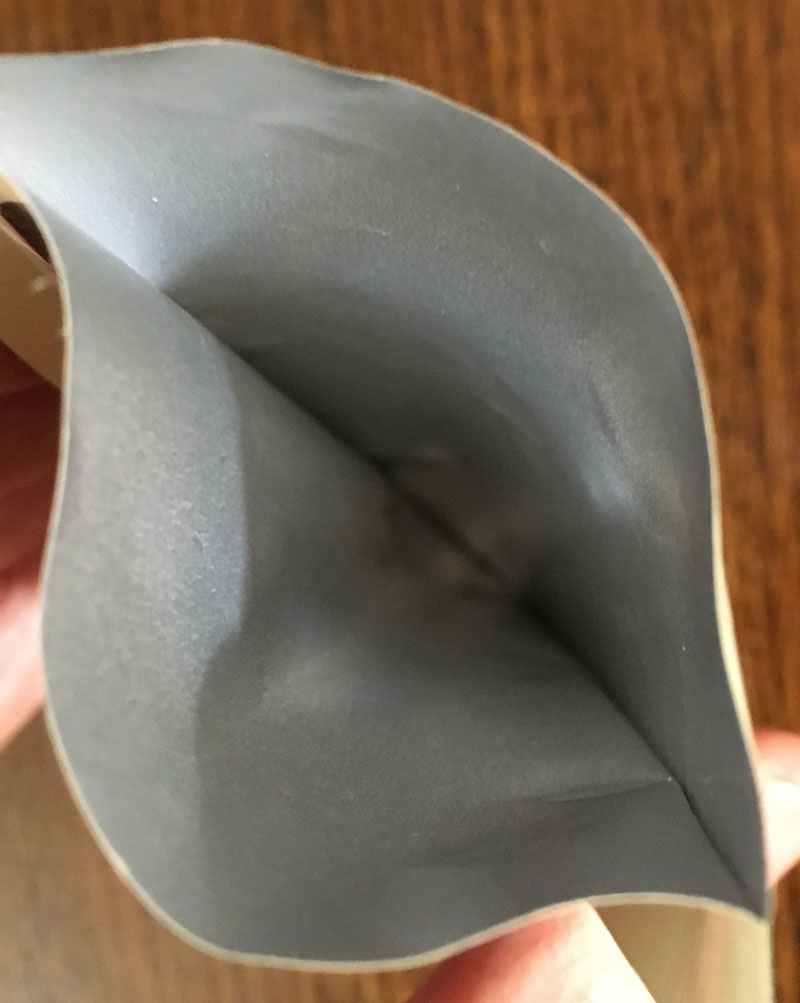
In making it to my home, the supply chain had performed a meticulously choreographed ballet, coordinating the movements of dozens of disparate suppliers and service providers — only to omit its concluding act. My accustomed, high position as a consumer — the focal point, terminus, and raison d’être of the greatest consumer-centered culture the world has ever known — had not only been given short shrift, but had been disregarded entirely.

I immediately felt the impulse to return to the store to reclaim my two dollars and ninety-six cents. But the package contained no product to return.
We all agree that a defective product should be eligible for refund. But when the defect is the absence of product, what then?
In packaging we trust
Long ago, consumers were more diligent about making sure they were getting what they were promised, before they plunked their money down.
For example, in grocery stores, many items such as fruits, vegetables, meats, and even things like soaps and crackers were commonly portioned and weighed only at the point of sale. Retail scales were (and still are) tightly regulated by government authorities, because they represent an opportunity to quietly cheat the customer, who cannot accurately judge weight by sight or heft alone. While an unscrupulous grocer might attempt to place his thumb on the scale, an observant consumer would likely see it happen.
Similarly, when gas stations first appeared, motorists were presented with the problem of confirming that they had received the amount purchased. The very earliest motorists had been purchasing what little gasoline they needed in small, pre-measured steel cans, much like we buy motor oil or anti-freeze today (gasoline was originally sold as a cleaning fluid). As demand grew, retailers began to keep large steel drums of gasoline, and allowed motorists to fill their own containers using a hand pump. The underground storage tank, dispensed by an automatic gas pump, finally became the norm. But because many motorists still wanted to see what they were getting, often the fuel was first pumped to a large, graduated glass cylinder that was integrated into the top of the pump. The customer could then see that the specified amount had been dispensed, before draining it into the fuel tank.
Outsourced
But today, we trust manufacturers and retailers to do almost all of our measurement for us. Even at $5.00 per gallon, we continue to place complete faith in the gas pump — trusting it to measure the correct amount directly into the darkness of our gas tank, sight unseen. In grocery stores, few ever think to question the stated net weight, or the ingredients, listed on the labels. Consider the level of unconditional trust that we demonstrate daily when we dump a can of tuna into a casserole, trusting it not to contain an unlucky squid; or unwrapping and biting into a candy bar without carefully inspecting it first. We have developed a deep and abiding faith in the supply chain: a belief that products can be trusted to be what they say they are; that products are measured accurately; and that they are not entirely missing from the package.

It still pays to be skeptical
The possibility of being disappointed by the contents of a seed packet is an insecurity that apparently has existed for generations. Most states have long required that seed packets show the minimum weight of seeds contained in the package, and many seed companies also provide a minimum seed count. Often, the number of seeds greatly exceeds the minimum count. This is probably because counting individual seeds is difficult, machinery is fickle, and seeds are cheap.
On the day I opened my empty seed packet, I developed a new appreciation for U.S. Patent No. 6,758,341, issued in 2004 to Livingston Seed Company. While Livingston has since been absorbed into another larger company, their brand and their clever seed packets live on.
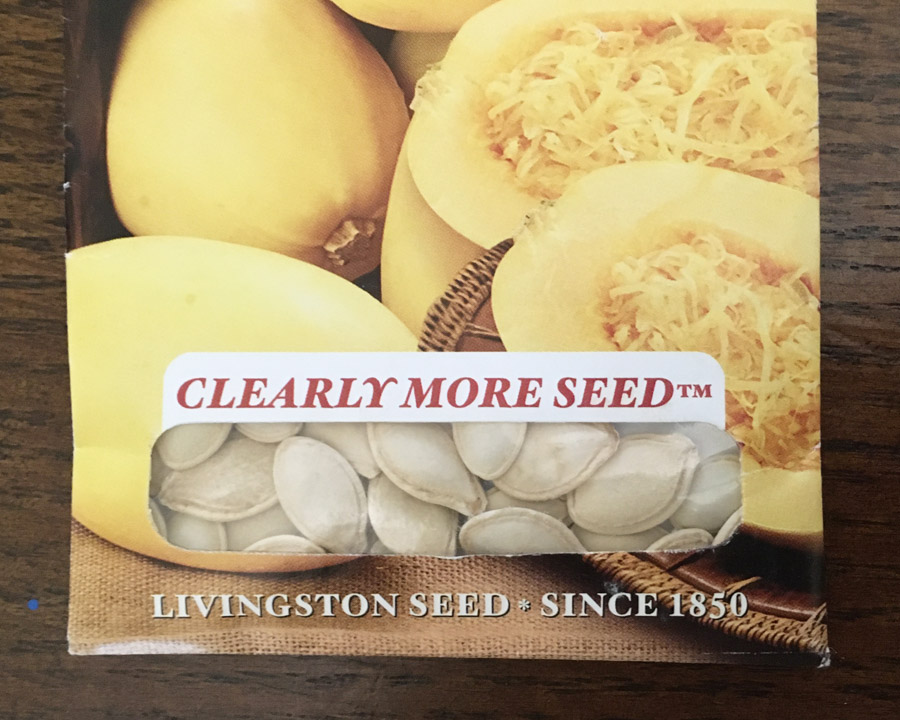
The Livingston package does not get around the labeling requirement, but it does give the customer the same assurance that I would have liked to have as I stood there with the San Marzanos in my hand. It simply places a transparent window in the packet, so you can see what you’re getting.
Why hasn’t every seed manufacturer done this? The patent has an opinion about it:
“Because it was discovered that purchasers desired to see the seed they were purchasing prior to purchase, structural changes were needed in the envelope. […] The industry standard is to seal the envelope by folding a sheet and sealing the top and the side of the envelope. The bottom is left open and the seeds are inserted into the envelope through the bottom in order to leave the top with a better, cleaner seal for the customer to open. Such practices are not practical if one desires to use an aperture in the envelope with a transparent sheet in front of it for viewing seed displayed in a display rack because this conventional practice would damage or destroy the transparent sheet.”
U.S. Patent No. 6,758,341
Livingston’s packages are thus filled from the top, and sealed at the top, so the transparent window can exist at the bottom. The patent is silent on how it manages to retain the “better, cleaner seal” on the top — presumably it doesn’t, which makes me think that this is an extremely thin premise for a patent. But even if it’s obvious, I do appreciate the little window.

Back to the store
Ordinarily, I would have resisted standing in a long line just to recover my $2.96. But I wanted to see what would happen. Would it even be possible to return an empty package, with no tangible evidence that the product was missing, other than my good word?
As I stepped up to the counter, the young clerk asked me how he could help. I explained that I was looking to return a packet of seeds, because the packet was empty. He eyed me for a split second, as if he had to consider how to respond to this slightly unusual request with a nonprogrammed response. He immediately recovered, choosing to say nothing, and initiated the processing for a refund — no questions asked. The apathy of a teenage big-box store clerk has its advantages.
I immediately made a beeline to the seed section, to see if I could find a package that actually contained seeds.
I found the San Marzanos again, decked out in their alluring Mylar elegance. Were they still poised to deceive?
I grabbed the first package in the display and examined it. I could feel no seeds. When I shook it, there was no rattle. I tried several others. About half of the packets had a slight rattle, and I could feel a sparsity of seeds inside. The others were certainly empty.
I took the packet that rattled the loudest. I paid for it and took it home. It had about the amount of seeds that I expected, from a stingy San Marzano.

Don’t scratch that itch
On the way out, I considered reporting to management that the San Marzanos were colluding to perpetrate fraud on the customers. But I decided against it.
This was a failure of the seed manufacturer, who probably tuned their machinery a bit beyond its limits and failed to adequately inspect the result. To some degree it’s also a failure of Home Depot, whose stock clerk was likely too undertrained, underpaid and unconcerned to detect such a problem. These practices collectively led to the situation that I encountered, and could not be corrected by alleviating a symptom that they presented at the point of sale. I felt it was more effective to allow the system to continue to trip over itself, so that the failure could be detected at a higher level.
I think of problems of this sort as a kind of retail inflammation, that signals the presence of a wound and motivates the pursuit of a cure. Obstinately perhaps, I take the same attitude when searching for a product in a poorly organized store. If the management did not place it in a logical place, then my inability to find it presents two possible outcomes: either I purchase it (after asking the staff for help), or it doesn’t sell because I couldn’t find it. While the first option allows me to come away with the product, the second is more likely to motivate the retailer to fix the problem for everyone, because it likely affects other customers as well.
By this reasoning, other customers looking for San Marzanos would continue to come back, returning the empties, until the clerks and the management began to detect a pattern. The manufacturer would then hear an earful from Home Depot, and urgently act to correct the problem, in fear of losing the contract. In contrast, if I had raised the alarm immediately, the debacle might have been rendered painless for both the retailer and manufacturer — who might have collectively shrugged it off, rather than fix the root cause.
Our inner enablers
It might be said that the faith and accommodation we extend to the packaging trade also acts to enable and perpetuate bad corporate decisions. Case in point: through my purchase, I essentially voted with my dollars that it was okay for the manufacturer to carelessly choose to market organic seeds in a Mylar package — even though I did not feel that way. When we approach the retail world for solutions to our needs and wants, we volunteer our faith — but are we being too accommodating for our own good?
I also extended a great deal of faith to the store by believing, by default, that the package contained what it purported to contain. In a reciprocal action, the store accepted on faith that the package had been empty, and reversed the transaction. No evidence was demanded, in either direction. While convenient, I wonder if this frictionless, mutual lack of scrutiny and attention just further enables a host of questionable decisions and practices in the manufacturing industry, which are not serving the world well in the long term.
Seeds of Change, the manufacturer of the empty packets, started as a small organic seed farm but was later sold to Mars Inc., a diversified multinational corporation that began as a manufacturer of candy bars. In typical corporate fashion, a century’s worth of acquisitions, pivots, and strategic refocusings has led them to unexpected destinations, such as the sale of garden seeds. One of these pivots was apparently not quite nimble enough to avoid the incongruity of selling organic seeds swathed in Mylar — if they make it into the package at all.
The moral of the story: always remember to shake your seed packets. And while you’re at it, consider shaking your head at some of the silliness on the sidelines.

Epilogue
Judging from the reviews on the Home Depot product page, my store in Ann Arbor was not the only one that received empty packets. Reading these reviews, I sense a vibe of resignation. No one mentions that they bothered to return the packages and complain in person, instead choosing to vent via one-star reviews from the comfort of their laptop. Was this any more effective?
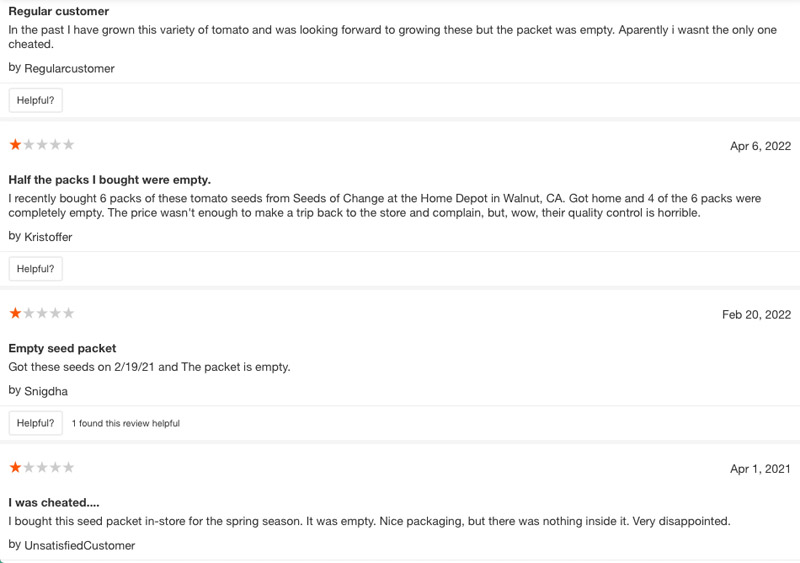
Amazon’s reviews indicate that this has been going on for some time — since 2015, at least. Seeds of Change appears to have come to terms with the unreliability of its packaging equipment, not by fixing it, but by repeatedly dressing the wound. The sole remedy seems to be to apologize and then send extra seeds. Lather, rinse, repeat!
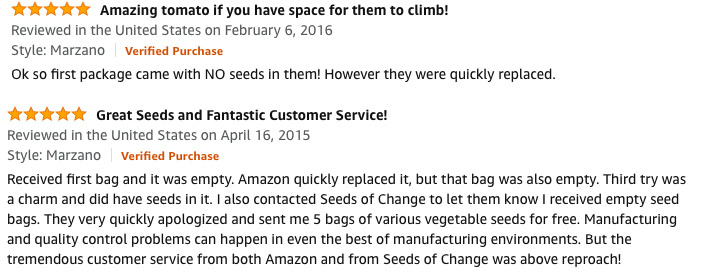
Article and photos Copyright 2022.
Cartoons excerpted from “The Victory Garden,” by Carl Barks (Walt Disney’s Comics and Stories # 31, April 1943).
